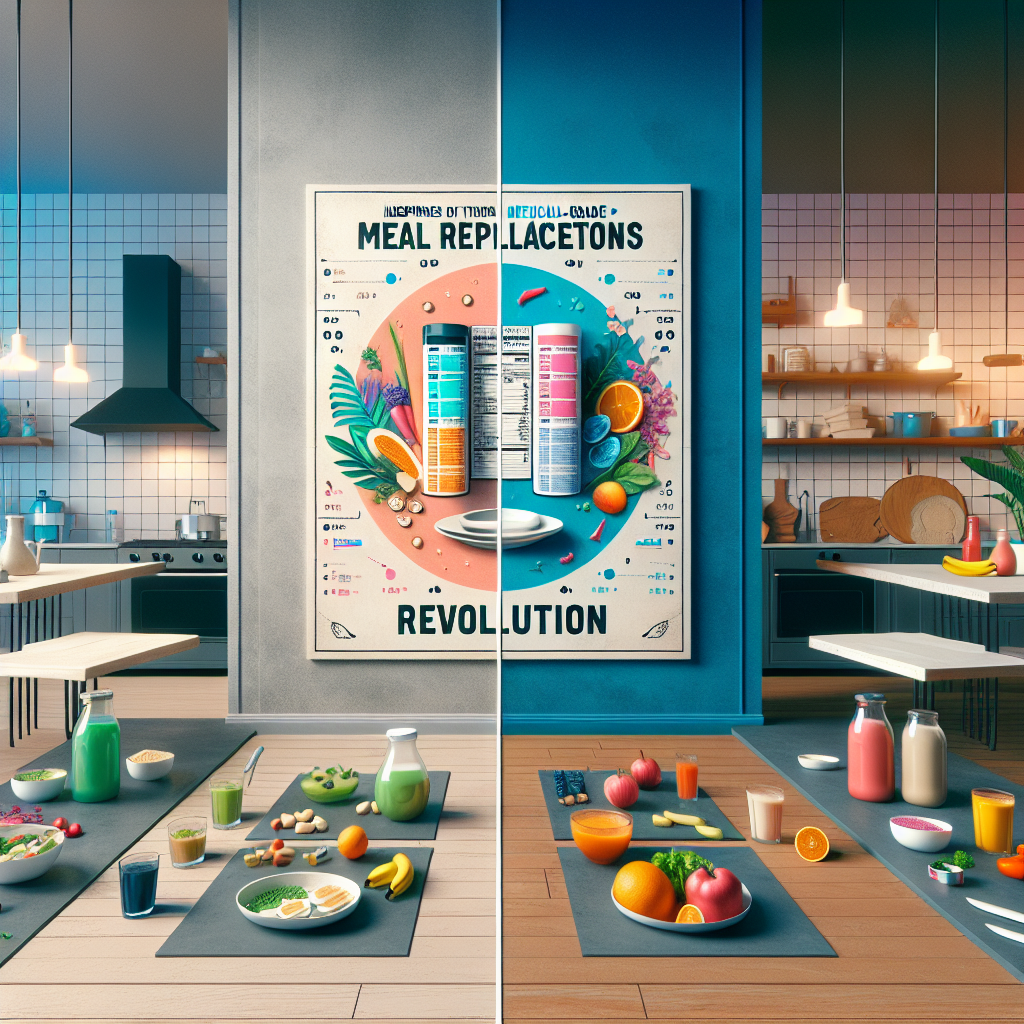
Liquid Diet Revolution: Medical-Grade Meal Replacements vs. DIY Approaches
The Rise of the Liquid Diet in Modern Living
In today’s busy world, convenience often takes priority over nutrition—but it doesn’t have to. For individuals pursuing better health, recovering from illness, or managing chronic conditions, liquid diets offer a practical and flexible solution. Among the most popular options are medical-grade meal replacements and homemade liquid meals. Each serves different needs and lifestyles, so understanding their advantages and limitations can empower you to make the best decision for your well-being.
What is a Liquid Diet?
A liquid diet is a nutrition plan where most or all of a person’s caloric intake comes from liquids like shakes, broths, or smoothies. These diets are commonly adopted for:
– Weight management
– Preparation or recovery from medical procedures
– Managing chronic conditions such as Crohn’s disease or cancer
– Fast, nutrient-dense meals for busy lifestyles
Liquid diets typically fall into two categories: those using pre-made, medically formulated products and those made at home from whole ingredients. From a clinical standpoint, liquid diets are classified as either full liquid diets (which may include milk and blended foods) or clear liquid diets (limited to options like broth, juice, or electrolyte drinks). According to the Cleveland Clinic, these diets support digestive recovery, alleviate chewing difficulties, and serve as short-term nutrition solutions during healing phases.
Medical-Grade Meal Replacements: Convenience and Clinical Precision
Medical-grade meal replacements are developed under stringent manufacturing standards. Commonly recommended or prescribed by healthcare professionals, products from brands like Ensure, Boost, Kate Farms, and Orgain are widely used in hospitals and treatment centers.
Advantages of Medical-Grade Options:
– Clinically tested to deliver balanced, reliable nutrition. For example, each bottle of Ensure Plus provides 350 calories, 13 grams of protein, and 26 essential vitamins and minerals.
– Offer consistent and stable nutrient delivery, essential for those with chronic illnesses or compromised diets.
– Supported by healthcare professionals. According to Dr. Robert Graham, MD, “Medical-grade nutritionals are especially helpful for patients unable to consume their daily needs from food due to fatigue, digestive dysfunction, or appetite loss.”
– Available in various formulas to accommodate dietary restrictions such as gluten-free, dairy-free, or low-FODMAP.
– Ready-to-use and require zero preparation—ideal for seniors, hospitalized patients, or those with limited strength or mobility.
Potential Drawbacks:
– Can be costly, especially without insurance coverage. A one-month supply may cost between $150 and $300.
– Often criticized for their limited flavors and sometimes chalky texture.
– Lack personalization. These products are mass-produced and may not align with cultural or taste preferences.
For reliable, doctor-recommended meal replacement options, explore services like eDrugstore.com, which offer prescription support and health guidance.
DIY Liquid Diets: Custom Nutrition from Your Kitchen
For those seeking greater control over ingredients and personalization, homemade liquid meals offer a flexible and creative alternative. These shakes and smoothies can be customized to match dietary goals, preferences, and lifestyle needs.
Today, platforms like YouTube, Pinterest, and TikTok are filled with recipes ranging from protein-packed post-gym smoothies to antioxidant-rich detox blends.
Benefits of Homemade Liquid Meals:
– Personalization allows for selecting whole ingredients such as oats, berries, chia seeds, turmeric, or plant-based milk tailored to your nutritional needs.
– More cost-effective compared to pre-packaged options, with most homemade shakes costing between $2 to $4 per serving.
– Enhanced flavor variety keeps meals enjoyable and prevents taste fatigue, encouraging better dietary adherence.
Challenges to Keep in Mind:
– Without expert guidance, it’s easy to create imbalanced meals that lack key nutrients like vitamin B12, iron, or adequate protein.
– Preparation and cleanup time can be a barrier for individuals with busy schedules or low energy levels.
– Perishability of fresh ingredients calls for careful storage, as spoiled items can pose food safety risks.
To ensure balanced nutrition, consult a dietitian or use a food tracking tool like Cronometer to monitor vitamin and macronutrient levels.
Medical vs. DIY: Which Should You Choose?
The best approach depends on your personal health circumstances, dietary needs, and daily routine.
Choose Medical-Grade Meal Replacements If You:
– Are recovering from surgery, undergoing chemotherapy, or have digestive conditions like gastroparesis or IBD
– Require guaranteed nutritional completeness without the risk of missing essential vitamins or minerals
– Need fast, low-effort meals due to limitations in energy, mobility, or appetite
Choose DIY Liquid Meals If You:
– Are generally healthy and want to create personalized beverages that align with fitness goals or wellness routines
– Want to incorporate whole superfoods like flaxseed, ginger, or spirulina into your diet
– Are looking to reduce consumption of processed foods or lower meal costs
According to a 2022 report by the American Nutrition Association, 42% of people following a liquid or blended food regimen use both homemade and commercial products, adjusting based on their schedules and energy levels.
The Hybrid Approach: Combine Convenience and Customization
Why choose just one method when combining both may offer the best of both worlds?
Many people use medical-grade products when:
– Traveling or on vacation
– Recovering from surgery or illness
– Under time pressure during busy workweeks
They then switch to freshly made, whole-food shakes on days when they can shop, prep, and blend. For example, a homemade green smoothie in the morning can be followed by a ready-to-drink shake for lunch—maintaining nutritional balance and variety.
To optimize your hybrid plan, speak with a licensed nutritionist who can identify nutrient gaps and offer individualized supplement guidance.
Final Takeaway: Choose What Fuels Your Life
The growing popularity of liquid diets shows they’re more than just a health trend—they’re a practical solution for many different lifestyles and health needs. Whether you opt for doctor-recommended medical shakes or prefer crafting your own nutritious smoothies at home, the key is to find a strategy that is sustainable, balanced, and tailored to your life.
Before making any major changes to your diet—especially one involving daily liquid meal replacements—consult a healthcare provider. Ensuring you meet all essential vitamin and mineral requirements is vital to long-term well-being.
Bottom Line:
There’s no one-size-fits-all approach to nutrition. By understanding and blending the benefits of medical-grade and DIY methods, you can build a flexible plan that supports your schedule, your goals, and your health—one shake at a time.
References
– Cleveland Clinic. “Liquid Diet: Benefits, Types & Risks.” https://my.clevelandclinic.org/health/articles/18672-liquid-diet
– National Institutes of Health (NIH). “Dietary Reference Intakes.” https://ods.od.nih.gov/HealthInformation/Dietary_Reference_Intakes.aspx
– Dr. Robert Graham, MD. https://www.freshmednyc.com
– American Nutrition Association. “2022 Survey.” https://theANA.org/liquiddiettrends
– eDrugstore.com. “Doctor-Prescribed Meal Replacements & Nutritional Support.” https://www.edrugstore.com


